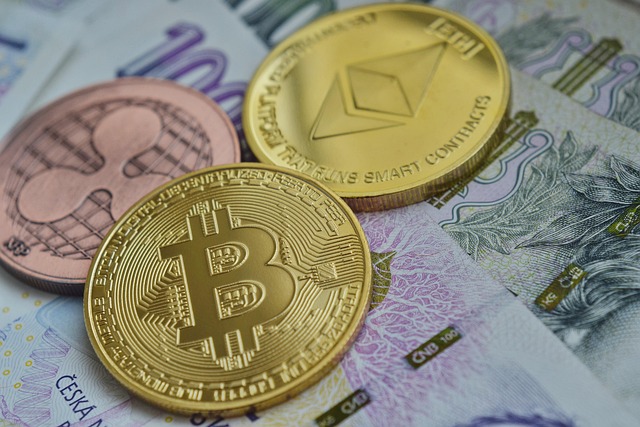How Is the Value of XRP Determined? An In-Depth Analysis
Author: Jameson Richman Expert
Published On: 2025-09-27
Prepared by Jameson Richman and our team of experts with over a decade of experience in cryptocurrency and digital asset analysis. Learn more about us.
The valuation of XRP, one of the most prominent and widely recognized digital assets within the cryptocurrency ecosystem, is influenced by a complex interplay of numerous factors. Unlike traditional fiat currencies, which are governed centrally by sovereign governments and monetary authorities, XRP’s value primarily emerges from market dynamics, technological utility, regulatory developments, macroeconomic trends, and social perceptions. Understanding how these elements interact provides investors, traders, and enthusiasts with a comprehensive perspective necessary for making informed decisions in a highly volatile and rapidly evolving environment. This in-depth analysis explores each determinant in detail, revealing the mechanisms behind XRP’s valuation and potential future pathways.

Market Supply and Demand Dynamics: The Foundation of Price
At the core of XRP’s valuation lies the fundamental economic principle of supply and demand. XRP’s total supply is capped at 100 billion tokens—a deliberate design feature embedded within its protocol to prevent inflation and maintain scarcity. This finite supply creates an inherent scarcity value, which, under typical market conditions, tends to support long-term appreciation. Of these tokens, a significant portion is actively circulating and traded across numerous exchanges, while the remainder is held in escrow accounts. Ripple Labs implemented escrow mechanisms to release XRP in controlled tranches—initially 55 billion XRP held in escrow, with releases scheduled periodically—to ensure predictable supply growth and prevent sudden inflation spikes.
Demand for XRP varies based on multiple factors: technological advancements, regulatory clarity, investor sentiment, and broader adoption by financial institutions and payment processors. When demand surpasses supply—such as through increased use cases or positive regulatory news—prices tend to rise. Conversely, if holders liquidate positions or if negative sentiment prevails due to legal or regulatory issues, prices may decline. Large holders, or “whales,” can exert outsized influence on market prices by executing sizable trades, which can induce abrupt market swings. Additionally, XRP’s intrinsic utility—particularly its role in facilitating fast, low-cost cross-border payments—adds a fundamental layer of value that influences demand levels and, consequently, valuation.
Market Liquidity and Trading Volume: Ensuring Market Efficiency
Liquidity plays a critical role in maintaining a stable and efficient market environment. It determines how easily XRP can be bought or sold without causing significant price fluctuations. Major trading platforms such as Binance, Coinbase, Kraken, and Huobi offer high liquidity for XRP, with substantial trading volumes, deep order books, and narrow bid-ask spreads, all of which facilitate precise price discovery and reduce slippage. High liquidity ensures that traders can respond swiftly to market news, technological updates, and macroeconomic shifts, enabling more accurate and timely price adjustments.
An efficient, liquid market helps prevent exaggerated price swings and enhances market stability, which is crucial for institutional investors and large-scale traders. For example, Binance’s deep liquidity pools for XRP help dampen volatility caused by large trades. Conversely, in low-liquidity environments, even small trades can cause disproportionate price movements, increasing volatility and risk. The reputation of exchange platforms and their ability to attract institutional and retail liquidity directly influence XRP’s market stability and valuation trajectory, emphasizing the importance of centralized and decentralized exchange ecosystems.
Market Sentiment and Speculation: The Emotional Drivers of Price
Market sentiment—the collective mood and psychology of traders and investors—can substantially sway XRP’s short-term and medium-term prices. This sentiment is shaped by news cycles, social media discourse, influential endorsements, and community narratives. For example, strategic partnerships between Ripple and major financial entities or successful protocol upgrades like the implementation of scalability features can generate bullish sentiment. Conversely, legal challenges, regulatory crackdowns, or security breaches tend to trigger bearish reactions.
Speculation often amplifies these sentiment shifts. Traders employ sentiment analysis tools—such as social media monitoring, news aggregators, and on-chain metrics—to anticipate potential price movements. Platforms like CoinGecko, Santiment, and TheTIE provide sentiment scores, community engagement metrics, and trend indicators. Given the crypto market’s psychological nature, understanding prevailing sentiment helps market participants position themselves more effectively amid fluctuating emotions, often leading to increased volatility. Sentiment-driven trading can result in quick rallies or sell-offs, especially during hype cycles or panic episodes.

Regulatory Environment and Legal Factors: Navigating Legal Uncertainty
Regulatory developments are among the most influential factors impacting XRP’s valuation. The ongoing legal dispute between Ripple Labs and the U.S. Securities and Exchange Commission (SEC) exemplifies this influence. The SEC’s claim that XRP constitutes an unregistered security has led to delistings from several exchanges, trading restrictions in certain jurisdictions, and a pervasive cloud of legal uncertainty. Such developments significantly impact demand and liquidity, often causing rapid and unpredictable price movements.
The outcome of this case could establish crucial legal precedents regarding the classification of digital assets, impacting XRP’s future adoption and regulatory treatment. Clearer regulatory frameworks and definitive legal rulings tend to foster market stability, encourage institutional participation, and facilitate broader adoption. Conversely, unfavorable decisions or regulatory clampdowns can severely hamper liquidity, deter investors, and diminish market confidence. Stakeholders must diligently monitor official legal proceedings, regulatory announcements, and expert legal analyses from authoritative sources such as CoinDesk, Law360, and legal experts to accurately assess potential impacts on XRP’s valuation. Ongoing regulatory evolution globally—such as the European Union’s MiCA regulation or the Securities and Exchange Commission’s stance—also influences XRP’s market perception and adoption prospects.
Technological Development and Network Adoption: Utility as a Valuation Driver
The technological robustness of the Ripple network and its adoption by financial institutions are central to XRP’s perceived utility and long-term value. The XRP Ledger is designed for high throughput—capable of processing approximately 1,500 transactions per second—and offers low transaction costs (a fraction of a cent) with rapid confirmation times (within seconds). These features make XRP an attractive solution for cross-border payment providers seeking cost-efficient, scalable, and reliable transaction infrastructure.
Ripple’s strategic partnerships with global banks such as Santander, Standard Chartered, and MoneyGram demonstrate real-world deployment, reinforcing XRP’s utility narrative. Ongoing protocol upgrades—such as interoperability enhancements, scalability improvements, and security features—indicate active development efforts to expand its ecosystem. Integration with decentralized finance (DeFi) applications, interoperability bridges with other blockchains, and innovations like the Interledger Protocol (ILP) that facilitate cross-ledger communications further increase utility and demand. Monitoring Ripple’s official development updates, industry adoption reports, and partnership announcements provides valuable insights into the network’s growth trajectory and its influence on XRP’s market value.
Macro-economic Factors and Cryptocurrency Market Trends
Broader macroeconomic conditions significantly influence XRP’s valuation. During periods of economic instability—such as inflationary pressures, currency devaluations, or geopolitical tensions—investors often seek alternative assets like cryptocurrencies as hedges or stores of value. For instance, during the COVID-19 pandemic, increased economic uncertainty spurred demand for digital assets, including XRP, as a non-sovereign store of value and transaction medium.
Additionally, the overall health of the cryptocurrency market impacts XRP’s price. Bitcoin’s dominance index, which measures Bitcoin’s market share relative to the entire crypto market, often serves as an indicator: when Bitcoin performs well, altcoins like XRP tend to follow suit, benefiting from improved investor confidence. Institutional interest—such as corporate treasuries allocating funds or venture capital investments into crypto—also bolsters market perception. Key macroeconomic factors to consider include interest rate policies, inflation rates, geopolitical stability, and global financial health, all shaping the investment climate and influencing XRP’s valuation.

The Role of Exchange Platforms and Community Engagement
Exchange platforms are crucial nodes within the XRP ecosystem. Leading exchanges like Coinbase, Binance, Kraken, and Huobi implement rigorous listing standards, ensuring transparent trading environments that foster investor trust. These platforms provide user-friendly interfaces, advanced trading tools, and extensive liquidity pools, supporting active trading and efficient price discovery. Furthermore, their global reach allows for broad access, increasing XRP’s liquidity and visibility in diverse markets.
Community engagement also plays a vital role. Social media channels, Reddit communities, Telegram groups, and grassroots initiatives—such as airdrops, trading competitions, and educational webinars—foster grassroots support and awareness. These communities can drive demand through collective action and viral campaigns, significantly boosting XRP’s visibility and desirability. Influencer endorsements and analyst opinions shared within these groups can sway market perception, leading to demand surges. A strong, cohesive community acts as a stabilizing force, helping to sustain interest and influence market perception—factors that ultimately impact XRP’s valuation.
Conclusion: A Multifaceted Perspective on XRP’s Valuation
In sum, XRP’s valuation results from a multifaceted web of interconnected factors. Supply-demand dynamics, market liquidity, investor sentiment, regulatory landscape, technological advancements, macroeconomic conditions, and community involvement collectively shape its market price. For investors and traders navigating this volatile environment, a comprehensive understanding of these determinants is essential. Staying informed through credible news sources, employing analytical tools, and engaging with reputable exchanges and communities enhance strategic decision-making. As the cryptocurrency ecosystem continues to evolve rapidly, ongoing monitoring of these factors remains crucial for accurately assessing XRP’s future value and capitalizing on emerging opportunities.